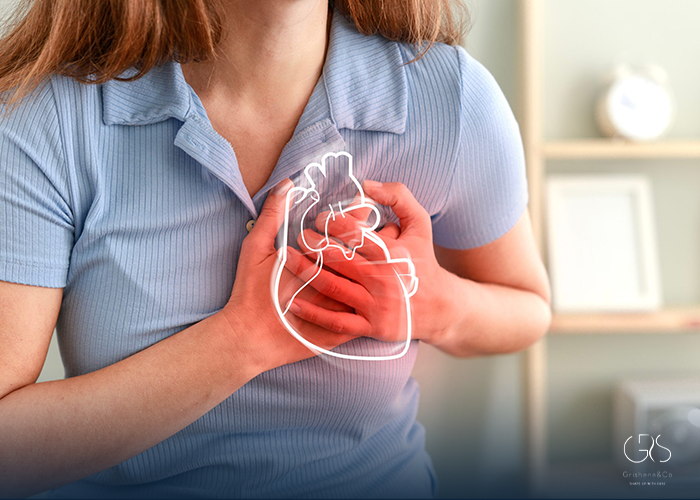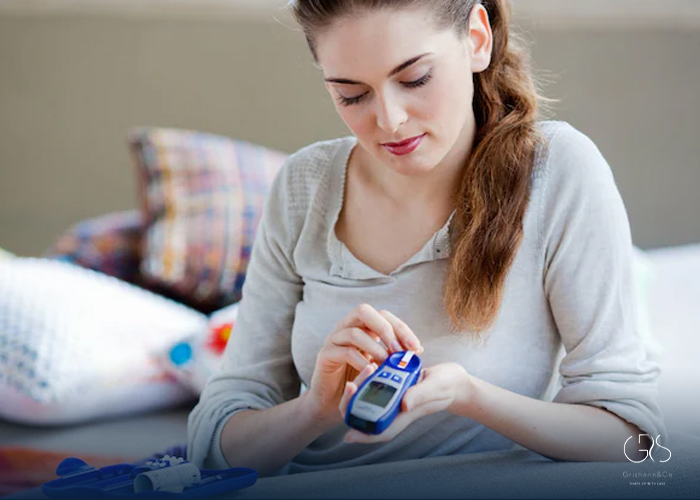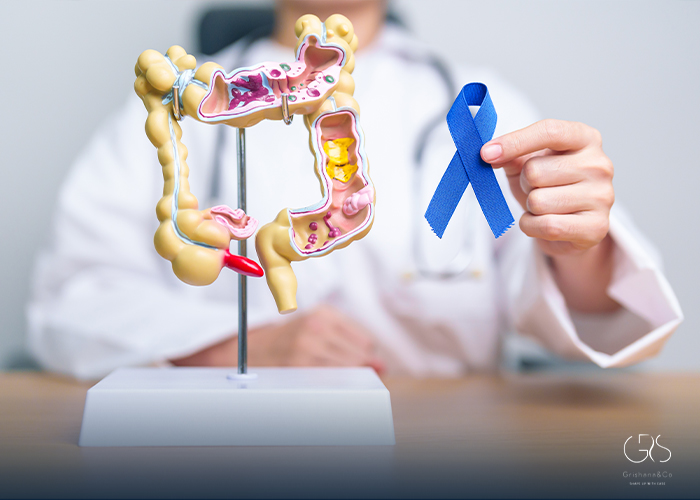Heart disease, also known as cardiovascular disease (CVD), remains the leading cause of death globally. According to the World Health Organization (WHO), approximately 17.9 million people die each year from CVDs, accounting for 32% of all global deaths. While heart disease encompasses various conditions affecting the heart and blood vessels, including coronary artery disease (CAD), arrhythmias, heart failure, and congenital heart defects, the signs and symptoms may overlap. Recognizing early symptoms is crucial for prevention, timely diagnosis, and treatment.
In this article, we will explore the scientifically validated signs and symptoms of heart disease, examining their physiological causes, when to seek help, and how they can differ between individuals and populations.
1. Chest Pain or Discomfort (Angina)
One of the most well-known and alarming symptoms of heart disease is chest pain, often referred to as angina. Angina occurs when the heart muscle doesn’t receive enough oxygen-rich blood due to narrowed coronary arteries. This pain is typically described as:
- Pressure, tightness, or a squeezing sensation in the chest
- Often triggered by physical activity or emotional stress
- Can radiate to the arms, neck, jaw, shoulder, or back
While angina is a common sign of coronary artery disease, it can also be a precursor to a heart attack. Not all chest pain, however, is cardiac. Gastrointestinal, musculoskeletal, or pulmonary causes may mimic heart-related pain, so any persistent or unexplained chest discomfort warrants medical evaluation.

2. Shortness of breath as a key sign of heart disease
Shortness of breath can be a sign that the heart is not pumping efficiently. When the heart can’t circulate enough blood to meet the body’s needs, fluid can back up into the lungs, causing difficulty in breathing. This is commonly seen in heart failure.
Dyspnea may present as:
- Difficulty breathing during exertion (e.g., climbing stairs)
- Waking up at night gasping for air (paroxysmal nocturnal dyspnea)
- Needing multiple pillows to sleep comfortably (orthopnea)
It is important to distinguish between dyspnea due to heart problems and that caused by lung conditions such as asthma or chronic obstructive pulmonary disease (COPD). Diagnostic tests such as echocardiograms and chest X-rays help determine the underlying cause.
3. Fatigue and Weakness
Unusual or excessive fatigue, especially in women, can be an early sign of heart disease. Unlike the fatigue caused by overexertion or lack of sleep, heart-related fatigue is persistent and not relieved by rest.
In heart failure, the body diverts blood away from less critical areas (like the limbs) to prioritize vital organs, leading to tiredness and muscle weakness. People may find daily activities—like walking short distances or climbing stairs—exhausting.

4. Palpitations and Irregular Heartbeat
Palpitations refer to the sensation of the heart racing, pounding, or skipping beats. While occasional palpitations are common and often benign, frequent or sustained arrhythmias can signal underlying heart issues.
Common arrhythmias include:
- Atrial fibrillation: Rapid and irregular beating of the atria, increasing stroke risk
- Ventricular tachycardia: A fast heart rate from the lower chambers, potentially life-threatening
- Bradycardia: Abnormally slow heart rate, possibly requiring a pacemaker
Associated symptoms can include dizziness, fainting, chest discomfort, or shortness of breath. If the heart rhythm disrupts blood flow, it can lead to sudden cardiac arrest.
(We recommend that you read about heart rate management.)
5. Swelling in the Legs, Ankles, or Abdomen (Edema)
When the heart weakens and can’t pump effectively, blood backs up in the veins, causing fluid retention in tissues. This condition, known as peripheral edema, is a hallmark of congestive heart failure.
Signs include:
- Noticeable swelling in the legs, ankles, or feet
- Abdominal bloating due to fluid accumulation (ascites)
- Rapid weight gain due to fluid retention
Edema is often more pronounced in the evening or after long periods of standing. While it may also result from liver disease, kidney problems, or venous insufficiency, in the context of other heart symptoms, it should be promptly investigated.
6. Dizziness, Lightheadedness, or Fainting (Syncope)
Syncope or feeling faint can be related to poor blood flow to the brain due to heart problems. Irregular heart rhythms or structural heart defects can disrupt the consistent delivery of oxygen-rich blood, leading to episodes of lightheadedness or complete loss of consciousness.
Common cardiac causes of syncope include:
- Arrhythmias
- Aortic stenosis
- Cardiomyopathy
If fainting is associated with chest pain, palpitations, or occurs during exertion, it is considered a medical emergency and may indicate a high risk of sudden cardiac death.

7. Persistent Cough or Wheezing
A chronic cough, particularly one that produces white or pink, blood-tinged mucus, can indicate heart failure. This occurs when fluid accumulates in the lungs due to poor cardiac function.
Though coughing is more often linked to respiratory infections or allergies, a heart-related cough is typically worse when lying down and may be accompanied by other symptoms like breathlessness and fatigue.
8. Pain in Other Parts of the Body
Heart disease doesn’t always present with obvious chest symptoms. For many people, especially women, discomfort can show up in other parts of the body, such as:
- Jaw or throat pain
- Shoulder or arm discomfort (especially the left arm)
- Back or upper abdominal pain
This is due to referred pain, where the brain interprets signals from the heart as originating from other areas. This form of “silent” presentation is especially common in diabetic patients and older adults.
9. Nausea, Indigestion, or Stomach Pain
These symptoms may seem gastrointestinal in nature, but they can also be warning signs of heart disease, particularly in women. During a heart attack, some individuals report a sensation similar to heartburn, bloating, or a sour stomach.
The reason is the close nerve connection between the heart and the gastrointestinal tract. If these symptoms occur alongside fatigue or shortness of breath, cardiac evaluation is essential.
10. Cold Sweats
Sudden, unexplained sweating—especially when not related to physical activity—may be a sign of myocardial infarction (heart attack). This symptom is typically associated with the body’s stress response to cardiac distress and the release of catecholamines.
Cold sweats combined with chest discomfort, nausea, or shortness of breath should be treated as a red flag.
11. Bluish or Pale Skin (Cyanosis or Pallor)
Poor oxygen delivery due to heart dysfunction can cause cyanosis—a bluish tint to the lips, fingertips, or toes. In newborns or infants, this can suggest congenital heart defects.
Similarly, pallor (unusual paleness) may occur due to reduced blood flow and oxygenation, indicating poor cardiac output. These symptoms are more common in advanced or critical cardiac conditions.
12. Snoring or Sleep Apnea
Loud, chronic snoring or episodes of stopped breathing during sleep may point to obstructive sleep apnea, which is closely linked to heart disease. Sleep apnea increases the risk of hypertension, atrial fibrillation, stroke, and heart failure.
People with untreated sleep apnea often experience:
- Excessive daytime sleepiness
- Morning headaches
- Restless sleep
Diagnosing and treating sleep apnea with CPAP or other interventions can significantly reduce the cardiovascular burden.
Differences in Symptoms by Population
Women
Women may experience less typical signs of heart disease. While chest pain still occurs, they are more likely to report:
- Fatigue
- Sleep disturbances
- Anxiety
- Nausea
- Neck, jaw, or back pain
This atypical presentation often leads to delays in diagnosis and treatment.
(We recommend that you read about heart attack symptoms in women)
Elderly
Older adults may have muted symptoms or attribute them to aging. Shortness of breath, fatigue, and confusion may be more pronounced than chest pain. Silent heart attacks (asymptomatic) are also more common.
Diabetic Patients
Diabetes can cause neuropathy that blunts pain perception, making it harder to detect classic symptoms like angina. These patients may present with vague symptoms like weakness or nausea.
(To learn more about Diabetes impact please refer to this article)
When to See a Doctor
Seek immediate medical attention if you experience:
- Sudden chest pain, especially with exertion
- Shortness of breath or wheezing
- Palpitations with dizziness or fainting
- Persistent fatigue or swelling in the legs
- Nausea or cold sweats with discomfort in the upper body
Early diagnosis with tools such as ECG, echocardiography, stress testing, or coronary angiography can dramatically improve outcomes. Lifestyle changes, medications, or interventional procedures may be required based on the diagnosis.
Conclusion
Heart disease does not always announce itself with dramatic signs. Subtle changes in how you feel—fatigue, breathlessness, palpitations, or even jaw discomfort—can be your body’s way of signaling that something isn’t right.
Paying close attention to these signs, especially if you have risk factors such as high blood pressure, diabetes, obesity, smoking, or a family history of heart disease, can save your life. Early recognition, timely evaluation, and appropriate treatment remain the most effective strategies for combating the global burden of cardiovascular disease.
Sources
- WHO, Cardiovascular diseases (CVDs)
- Centers for Disease Control and Prevention, Heart Disease Facts
- How the Heart Works, National Heart, Lung, and Blood Institute










